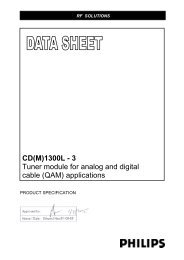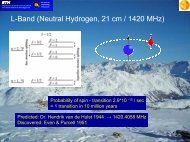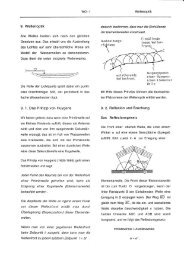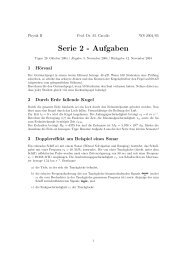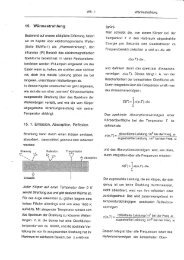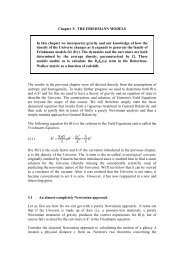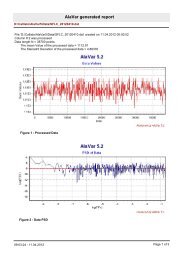here - Institute for Astronomy Umleitung
here - Institute for Astronomy Umleitung
here - Institute for Astronomy Umleitung
You also want an ePaper? Increase the reach of your titles
YUMPU automatically turns print PDFs into web optimized ePapers that Google loves.
Title: Science Case<br />
Reference: MUSE-MEM-SCI-052<br />
Issue: 1.3<br />
Date: 04/02/2004<br />
Page: 78/100<br />
A more recent alternative approach is<br />
based on the spectroscopic analysis of<br />
individual resolved luminous stars in<br />
nearby galaxies, e.g. M31 (Smartt et al.<br />
2001, Venn et al. 2000), NGC6822<br />
(Venn et al. 2001), M33 (Monteverde et<br />
al. 1997), or NGC300 (Urbaneja et al.<br />
2003). Using VLT + FORS, the<br />
feasibility of high signal-to-noise stellar<br />
spectroscopy even beyond the local<br />
group was demonstrated by Bresolin et<br />
al. (2001), who measured 7 supergiants<br />
of spectral types B, A, and F with<br />
V≈20.5 in NGC3621 (d=6.7 Mpc). For a<br />
review on extragalactic stellar Fig. 4-9: Removing nebular contamination from<br />
stellar spectrum using cplucy<br />
spectroscopy, see Kudritzki 1998.<br />
Using its potential <strong>for</strong> crowded field spectroscopy, which is superior to any other conventional<br />
technique, MUSE will explore the emerging field of extragalactic stellar spectroscopy as an<br />
important step towards the optimal use of the combination of light-collecting power and<br />
angular resolution of these future telescopes, whose importance <strong>for</strong> applying the wellestablished<br />
methods of quantitative stellar spectroscopy to stars in galaxies outside of the<br />
Milky Way must be stressed as one of the major innovations in astrophysics of the next<br />
decades.<br />
The main argument is that the knowledge of the point-spread-function (PSF) of a stellar<br />
object can be used to apply PSF-fitting techniques, thus discriminating the source against the<br />
background ⎯ analogous to PSF-fitting CCD photometry, which has been so successful <strong>for</strong><br />
the construction of globular clusters CMDs and the photometric study of resolved stellar<br />
populations in nearby galaxies (Mateo 1998). The novel technique has been pioneered with<br />
relatively small present-day IFUs and limited angular resolution (Roth et al. 2003, Becker et<br />
al. 2003). These studies have demonstrated the unique capabilities which can be expected<br />
from the 1 arcmin FOV of MUSE, sampled at 0.2” spatial resolution (or its equivalent in the<br />
Narrowfield Mode).<br />
Becker et al. (2003) have processed datacubes of the LBV candidate star B416 with its<br />
surrounding nebula in M33 using the cplucy two-channel deconvolution algorithm to separate<br />
the stellar spectrum from a spatially unresolved nebular component (Fig.4-9). This technique<br />
makes use of the spatial resolution of an HST image of the same field, providing <strong>for</strong> an<br />
accurate model of the heavily blended stellar field from the ground-based 3D observations.<br />
Fig. 2 shows how it was possible to accurately subtract from the stellar spectrum the<br />
contaminating [O III] λ4959, λ5007 emission lines, revealing He I λ5015 and a blend of Fe I<br />
lines. This result would have been impossible to obtain from conventional slit spectroscopy,<br />
demonstrating that the 3D method opens entirely new opportunities <strong>for</strong> crowded field<br />
spectroscopy.




